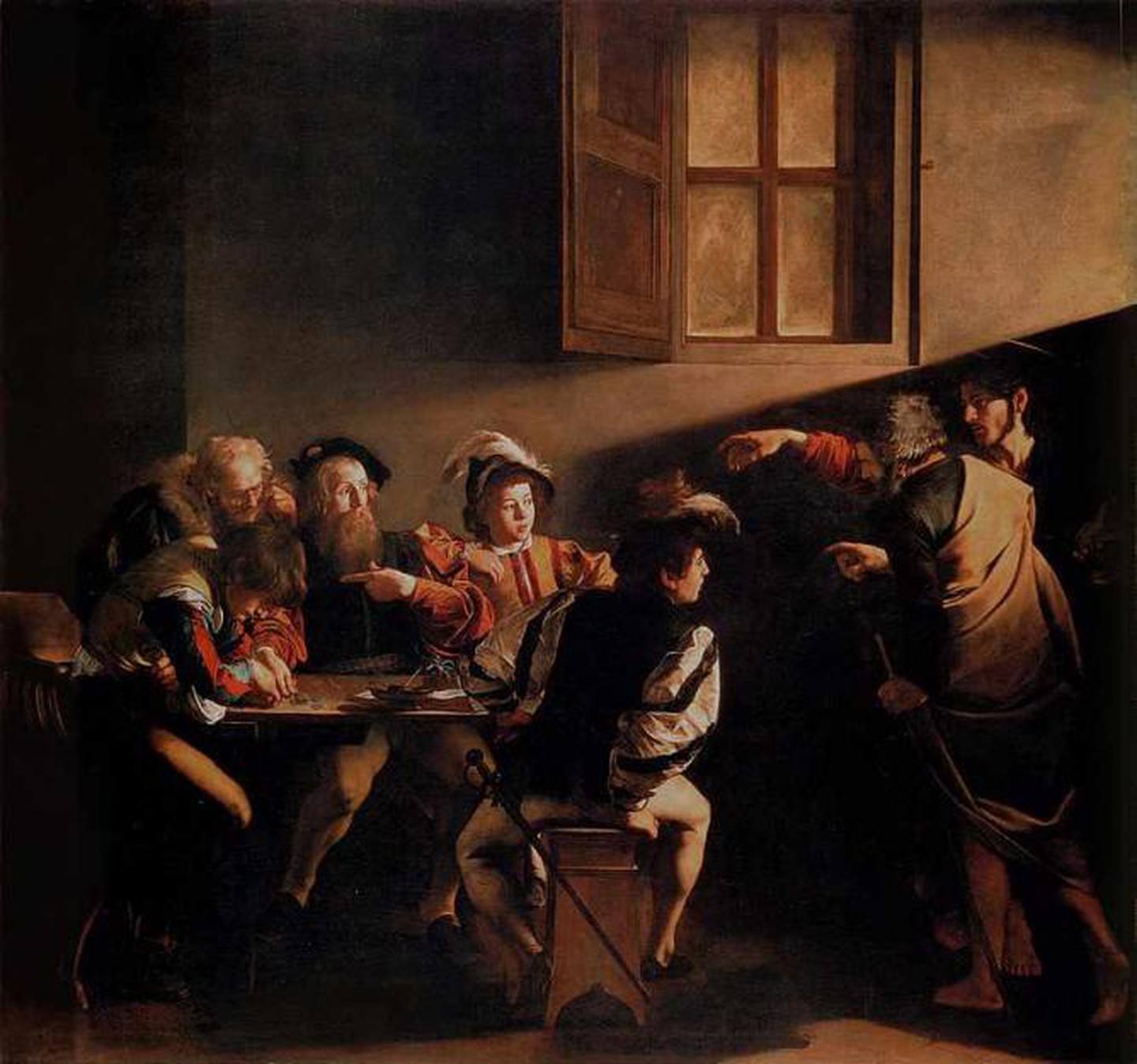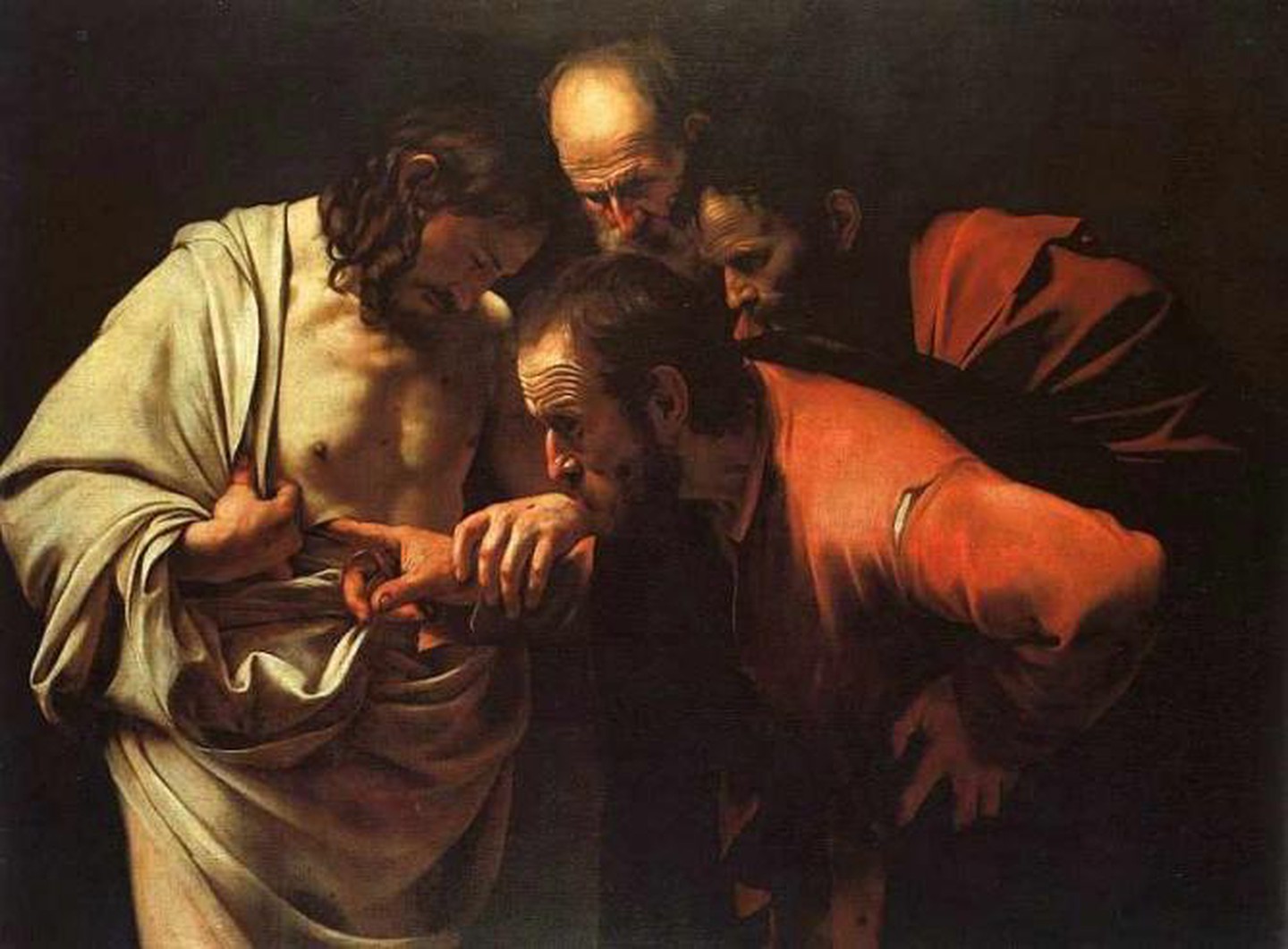Michelangelo Merisi, also known as Caravaggio
Michelangelo Merisi, also known as Caravaggio, was an Italian painter active in various parts of Italy, such as Rome, Naples, Malta, and Sicily between 1590 to 1610. His paintings have become famous over the years because of his ability to combine realistic observations of the human physical and emotional state with dramatic lighting. The style employed in his paintings can be seen as an early precursor of the Baroque style of painting.
Caravaggio’s Life
Caravaggio was born in Milan in 1571. His father, Fermo was the household administrator, architect and decorator to the Marchese of Caravaggio, a small town near the city of Bergamo, and the place from which Caravaggio would take his artist name later in life. In 1576 he and his family moved from Milan to Caravaggio to escape a plague overrunning the Milan suburbs.
Caravaggio’s father died not longer after and his mother followed suit in 1584 leaving him an orphan. It was in this same year that he began a four-year apprenticeship with Simone Peterzano, a Milanese painter who taught Caravaggio the basics of his art. Moving back to Milan he underwent further initial training under Simone Peterzano, before leaving Milan in 1592 after being accused of wounding a police officer. He arrived in Rome as he described his own words, “naked and extremely needy … without fixed address and without provision … short of money.”
Success in Rome was a little easier to come by as the many new churches and palazzos increased the demand for artworks and paintings. Caravaggio’s style was becoming highly sought after and his radical naturalism combined with physical observation and a theatrical use of chiaroscuro led to his work being held in high regard.
During this period, Caravaggio secured a string of highly prestigious commissions for religious works generally featuring violence, decapitations, torture and death. For the most part, each new piece of work increased his fame and by 1604 his paintings were famous not only across Italy but across Europe.
Unfortunately, Caravaggio led a turbulent life, and he was notorious for brawling, leading to many trial proceedings being held against him. In May 1606, he accidently killed a young man named Ranuccio Tomassoni in mysterious circumstances. This led to Caravaggio being outlawed and fleeing to Naples where he became a patron of Costanza Colonna Sforza, widow of Francesco Sforza, who Caravaggio’s father had previously held a position. Outside the jurisdiction of Roman authorities and protected by the Colonna family, he continued to paint and became one of the most famous painters in Naples.
Despite being successful in Naples, after only a few months Caravaggio left to go to Malta. Fabrizio Sforza Colonna, Costanza’s son, was a Knight of Malta and general of the Order’s galleys. It is presumed that Caravaggio hoped the Grand Master of the Knights of Saint John, would help him secure pardon for Tomassoni’s death so he could return to Rome at the earliest opportunity.
Whilst in Malta Caravaggio continued to paint and again found himself being commissioned for many important religious pieces. Unfortunately, by August 1608, he was again arrested and imprisoned for another brawl this time with a knight.
Upon release, Caravaggio decided to make his way to Sicily. Reports from this period show him to be a man of increasingly bizarre behaviour and after rubbing one too many locals up the wrong way he moved back to Naples after only nine months.
In October 1609 he was involved in a violent attempt on his life which led to his face being seriously disfigured. Perhaps fed up with the life he was now leading, he took a boat northward in hope of receiving a pardon from Rome. What happened during or after this boat trip is shrouded in mystery, but the facts are that at some point during the trip Caravaggio died. Initial reports stated a fever took him, with many historians musing that he may have died of syphilis, malaria, or possibly brucellosis. Some scholars, however, argue that Caravaggio’s antagonistic nature may have led to him being attacked and killed by someone bearing a grudge. Whichever is true, the world had lost an important artist whose work would live far beyond his death.
Caravaggio’s style
Caravaggio style employed observation of the physical form with dramatic use of chiaroscuro (the use of contrasting light and shadow). He used darkened shadows to transfix subjects in bright shafts of light that allowed crucial moments and scenes, often featuring violent struggles, torture or death, to be transfixed in time.
Famous Works
– The Calling of Saint Matthew

This, probably the most famous painting by Caravaggio, shows the moment Jesus inspired Matthew to follow him. Standing alongside Saint Peter, Jesus points at Matthew, who sits at a table with four other men. The painting is clearly inspired by the real world and he anchors the biblical scene in reality. Heavy use of shadows lifts the drama to new heights and adds seriousness to an already tense scene.
– Doubting Thomas

Another biblical themed painting. Doubting Thomas, also known as The Incredulity of Saint Thomas, shows a detailed and gory picture of the scene where the apostle Thomas pokes his fingers into the wounds suffered by Christ during crucifixion to make sure they are real. Again, a heavy use of shadow adds drama to the scene.
– Bacchus

Bacchus was the Roman name for the god of wine, madness and ecstasy. In the painting by Caravaggio, we see Bacchus portrayed as a 17th century Italian teenager. Many have speculated that Caravaggio used a mirror to paint Bacchus and modelled the god on his own form.
